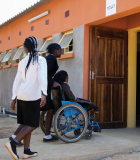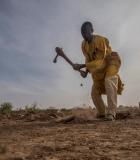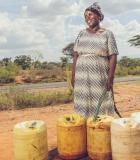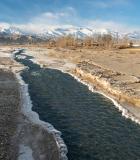Our world is becoming more urban, and USAID is helping partner countries adapt to this rapid change. By 2030, 68 percent of the world’s population will be living in cities, with the majority of that growth happening in the developing world. The infrastructure of these cities, peri-urban areas, and market towns is under great strain as their populations grow. Access to safe drinking water in many urban areas is actually declining in response to demographic shifts, while water insecurity is growing, particularly among the urban poor, as city planners struggle to adapt to changing water supply and demand.
With severe water shortages in major cities such as Cape Town, Mexico City, and Chennai recently grabbing headlines, USAID is helping partner cities and towns avoid their own “day zero” scenarios — when taps run dry — and improving sustainable water access for the most needy.
To commemorate World Water Day, here are five ways USAID is helping thirsty cities become more resilient in the face of a growing water crisis.
Read the full photo essay on Global Waters on Medium.






